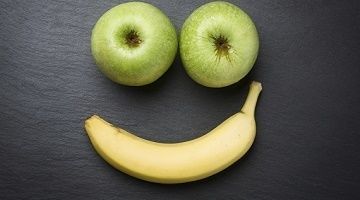Wellbeing
Get some tips this Dry July!
A simplified guide to a balanced diet
By Warren Maginn on
With health as the new currency, having a balanced diet plays an integral role in every path to wellness. What a balanced diet means, though, is open for interpretation. Clinical Nutritionist and Spokesperson for Nordic Naturals, Warren Maginn, shares his simplified guide to a balanced diet.
A balanced diet should contain a mix of vegetables, protein, carbohydrates and foods rich in omega-3s. Proportion is key to getting the ‘balance’ right.
Here are a few things to keep in mind when meal planning.
1. Colour Your Dinner Plate

Regardless of your fitness/weight loss goals, every diet should have a sufficient amount of vegetables. For the average adult, 5 serves of vegetables is the recommended amount. You can improve the nutritional value of your vegetables by steaming your vegetables. Each serve should be the size of your fist.
Our body relies on the foods we eat for omega-3s, as they do not naturally occur in the body. As such it is essential to eat a diet rich in omega-3s. Opt for foods that are rich in essential fatty acids (EFAs), which help keep cells healthy by transporting nutrients in and wastes out. Omegas in skin cells are important for helping to retain moisture, promoting cell turnover, distributing melanin evenly, and helping to reduce free radicals that can cause damage and ageing effects. Omega-3s have numerous additional health benefits ranging from supporting heart and brain health to promoting optimal metabolism and immunity. It’s recommended we have three serves of oily, cold-water fish such as salmon, tuna or mackerel every week, but if this is a challenge, go for a high-quality, scientifically proven omega-3 fish oil supplement to support inner and outer health.
3. A Fruitful Diet

Although fruit contains essential vitamins and minerals, your body doesn’t require more than 2 serves a day due to the high sugar content. Opting for fruits that are low glycemic index (GI) will allow you to have more variety whilst still keeping within the boundaries of the adequate amount. A bowl of cherries or a few slices of grapefruit are a great snack.
4. Don’t Ditch the Carbs
Don’t be swayed by the idea that in order to maintain a healthy diet you must cut out carbs. Carbohydrates with low GI such as whole grains and quinoa are slow in releasing energy whereas “white” carbohydrates could cause a spike in your blood sugar levels leaving you feeling hungrier sooner rather than later. Opt for carbs in the morning rather than later in the evening as your body does not produce enough energy to burn them off.
5. Proteins That Pack a Punch

Protein is the building block of every healthy diet and can be sourced from animals, lentils, beans, tofu and dairy. Grains such as brown rice are a good source of protein and contain essential amino acids, which aid in muscle repair. It is also low GI meaning you stay full for longer. When considering meat as a source of protein, avoid processed meats, which are full of nasty preservatives. You should opt to buy organic where possible.
For more info, please visit www.researchnutrition.com.au.
You may also like

Healthy Eating on the Go
By Zoe Bingley-Pullin on
Healthy eating can be tricky to maintain. While we may eat balanced meals at home, upholding the standard can be hard when we are out on weekends or during a busy work week.
It is easy to be tempted by the cheap and nutritionally empty food when we are busy and on-the-run. “Fast food” is quick, effortless and hard to resist, especially when in the company of someone who is not health-conscious.
However, the problem with fast food chains is that they promote overeating. This prevents you from digesting your food properly and is generally an unhealthy way of living.

While it is unrealistic to stick to a strict diet all of the time, it’s important to take note of exactly what we are putting into our bodies, and choose the best options...

Making Food Your Friend
By Leanne Hall on
If you are like most people, you find it impossible to keep up to date with the latest diet “fad”. From the Atkins Diet, the Zone Diet, and more recently the Paleo diet, intermittent fasting diets, and the latest “body transformation” web based programs. All have one thing in common: they promise weight loss…..FAST!
It’s not rocket science, restricting your food intake will make you lose weight. However, keeping it off is where the overwhelming majority of these programs receive an epic…..you guessed it….. FAIL!
So why is this the case, and what can you do instead?

Well, it all starts by taking a long hard look at your relationship with food. Right from when we were kids, we began categorising food as “bad” or “good”...

Top five tips for keeping hydrated during Dry July
By SodaStream on
The Dry July month is the perfect time to reassess all of your health and wellbeing goals for the rest of the year.
Hydration is a key element to ensuring physical and mental performance as our body water content declines with age, from about 75% in babies to 60% in adults.
According to research conducted by Sodastream, there is mass confusion around the effects of dehydration, with only a third (35%) of Australians recognising key symptoms like lethargy, despite the majority (80%) suffering on a regular basis.
Despite many believing that two litres is the recommended daily amount for all, the amount needed varies, dependent on individual factors including age, diet, climate and levels of physical activity.
Sodastream put together 5...